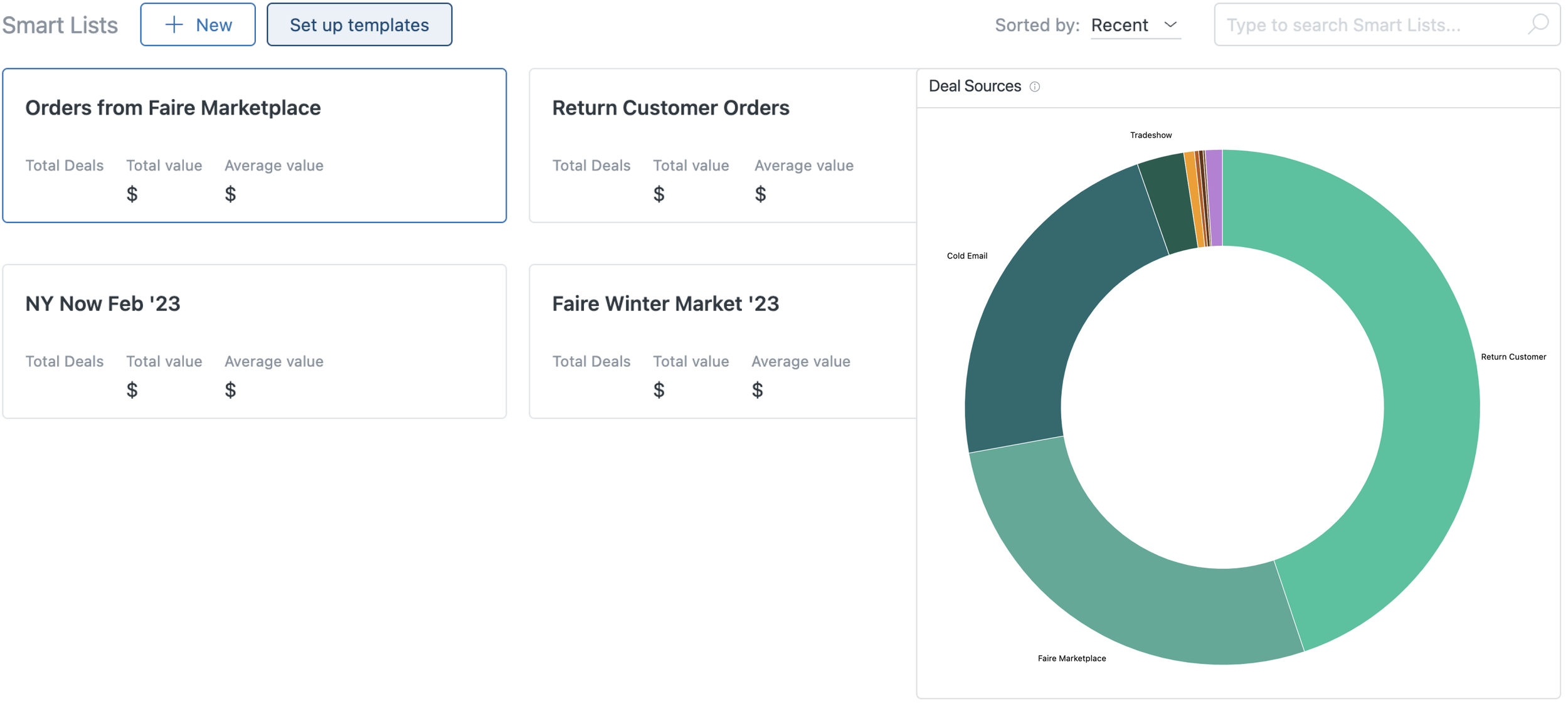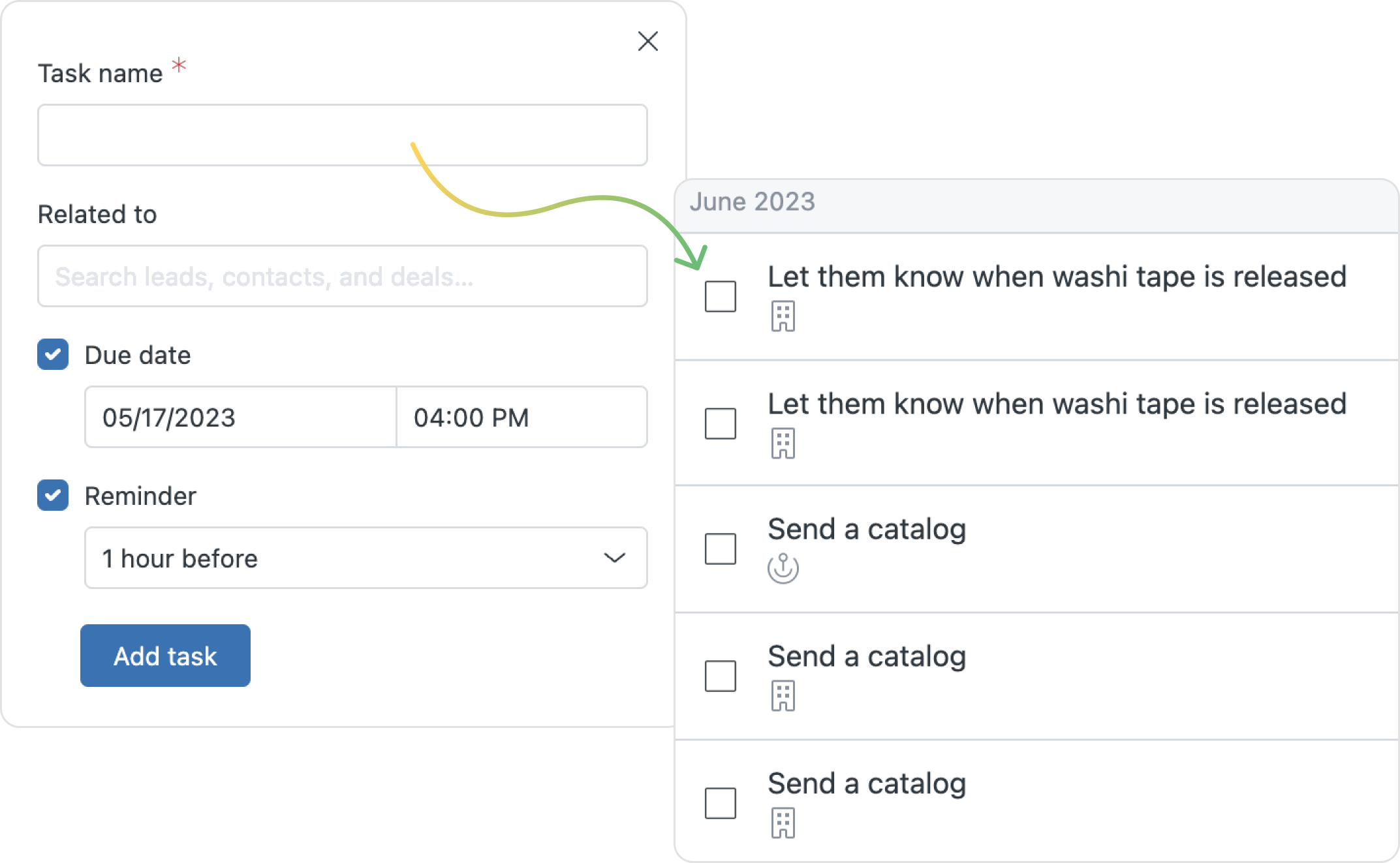How Zendesk Sell Can Help You Manage Your Wholesale Leads and Customers
Managing customer relationships is super important for the success of any wholesale business. When you track customer interactions and manage deals all in one place, you gain valuable insight into your customers' purchase history and preferences. This can make it so much easier to create targeted marketing strategies that really hit the mark. If you're looking for a way to simplify your sales process and boost productivity, I highly recommend checking out Zendesk Sell for your CRM needs. It's been a game-changer for us, and I think you'll love it too!
Keep track of the status of your leads, as well as any emails, phone calls, or other communications you have sent them.
Managing your customers can be a bit tricky, especially if you have a large customer base. However, with Zendesk Sell, you can keep track of all customer interactions in one place, making it super easy to spot patterns and trends in customer behavior. To keep track of important details, consider adding notes to each lead's profile, like their interests, pain points, and preferences. You can also easily keep notes on whether a potential customer is showing interest in products and services (maybe they added products to their Faire cart) or maybe they are lacking interest (they say your products aren't a good fit for their store). This information can be used to develop targeted marketing strategies. For warm customers, you might want to send them a catalog and a product sample in the mail to encourage them to place an order.
Another great idea is to send personalized messages to your customers on special occasions like their birthdays or company anniversaries. This will help show that you value their business, build loyalty, and strengthen your relationship with them. Don’t be afraid of your vendors! Be friends with them!
Below you can see an example of what a customer page looks like in Zendesk. It shows your email communication, contact info, order they’ve placed, and much more!
Also, after attending trade shows or other events, you can keep track of the people you met and any relevant details about them. This can include their job title, company name, personal interests, and any follow-up actions you plan to take. By recording this information, you can maintain and build relationships over time, and increase your chances of closing deals with these prospects.
In order to stay on track, it is important to set monthly and yearly revenue goals, and track performance against them.
Great job setting your sales goals! Now, let's make sure you're on track to achieve them. Regularly tracking your progress is key to making informed decisions that will help your business grow. Don't forget, tracking your revenue isn't just important for meeting your goals, it can also help you identify areas that need improvement. By comparing your current performance with historical data, you can identify trends and patterns that will inform your strategic decisions. For example, if you notice a consistent decline in revenue during a particular month or quarter, investigate the cause and make changes to your strategy to address the issue.
Analyze your average order value (AOV), breaking it down by the source of the deal and the year.
Tracking deals is a crucial aspect of any sales process, and Zendesk Sell provides a powerful deal management system that makes it easy to keep track of all your orders in one place. With this platform, you can easily add new deals, view their progress, and track their status.
One thing I really appreciate about Zendesk Sell is its ability to identify which sales channels are most effective through the reports tool. You can then track your progress over time as your average order value (AOV) increases. For instance, you can determine if return customers place larger orders than first-timers or if your trade show orders are decreasing. Analyzing these comparisons allows you to consider where to make changes to increase your AOV.
Example of how you can break down sales data. (Yes, I did remove all of my financial info from this screenshot 😉 )
Track email engagement metrics, such as open rates and click-through rates, to identify which messages are resonating with your audience and which could use improvement.
With Zendesk, you can easily check if your email has been read or if the links included in your email have been clicked. This is super useful to gauge interest in your message. On the flip side, if it seems like your email isn't getting any traction, you might want to try switching things up by sending a different email or even a physical sample in the mail. These metrics can also help you decide whether you should run A/B tests on different subject lines or calls to action. This way, you can optimize your email campaigns and increase the engagement of your audience.
Use the tasks feature to remember to send someone a catalog or product sample, and keep that information on their page for future reference.
Additionally, you can create tasks to remind yourself to follow up with leads or customers at specific intervals, such as one week or one month after their last interaction with you.
So, that’s how I’ve been using Zendesk Sell to manage wholesale leads, customers, and deals. It has made my sales process so much easier and more productive! If you're looking for a software that can help you manage your sales process too, I would definitely recommend checking it out. It has helped me to manage my customer relationships more effectively and to make better-informed decisions about my business strategy. By using this tool, I have been able to reach more potential retailers and develop targeted marketing strategies that have helped me to grow my business and achieve my financial goals.
To learn more about the other platforms I use for my business, check out this blog post.






